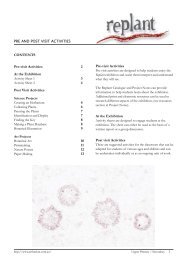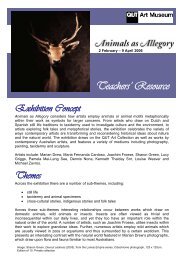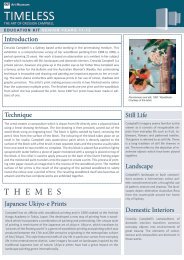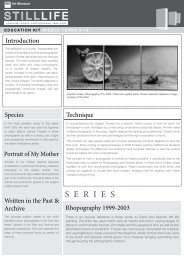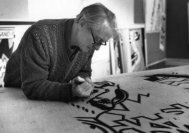Clifton Pugh - QUT Art Museum
Clifton Pugh - QUT Art Museum
Clifton Pugh - QUT Art Museum
You also want an ePaper? Increase the reach of your titles
YUMPU automatically turns print PDFs into web optimized ePapers that Google loves.
Siri Hayes Australia 1977<br />
Crossing the Merri (from Lyric Theatre Series)<br />
2003 type c photograph<br />
165.0 x 136.0 cm<br />
La Trobe University <strong>Art</strong> Collection<br />
Education Kit<br />
clippings of common images of environmental ‘acts of god’ that affect Australia. Hence<br />
scenes of drought, flood and cyclone. The iconic image of Uluru is replaced with a mound<br />
of Ikea furniture covered in the red dust of the desert, providing commentary on the<br />
post-colonial occupation of the land.<br />
Photographer Siri Hayes, like Laing, works in series. In her Lyric Theatre series she<br />
directly references early colonial artist John Glover and his painting of the Australian<br />
landscape in her work John Glover’s Trees. Laing in her 2001 groundspeed (Red piazza)<br />
series does the same with Glover’s 1835 work A View of the <strong>Art</strong>ist’s House and Garden,<br />
Mills Plains, Van Diemen’s Land.<br />
Existing European conventions of composition and subject matter were often employed<br />
by the colonial artist; contributing to a familiar tableau of a constructed Australian<br />
landscape. Both Hayes and Laing evoke narrative in their work whilst providing a critique<br />
of the European rendering of the Australian landscape.<br />
Hayes deliberate construction of the scenes within her Lyric Theatre series stems from<br />
the more intimate relationship a landscape in your own neighbourhood, or one that you<br />
visit often, can provide. Why do you think Hayes chose to include the detritus of the urban<br />
environment in her Cat’s Cradle work from the series? How does the work of both Laing<br />
and Hayes contribute to new readings of the Australian landscape? Discuss the<br />
difference between documentary photography and the constructed tableaux of Laing and<br />
Hayes.<br />
Consider the last photograph of which you were a part. Was it a formal family portrait,<br />
perhaps a snap shot of an object or event that took your interest, if it included people,<br />
were they aware a photograph was being taken? Bring a recent photograph into class<br />
and create a photo mural on a wall in the classroom. Discuss the differences and<br />
similarities between your classmate’s chosen photographs.<br />
Page 19


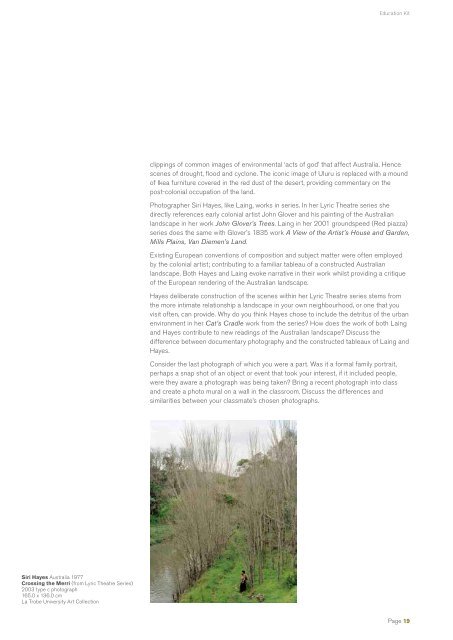

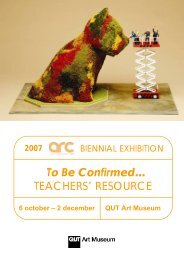

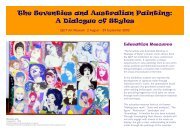
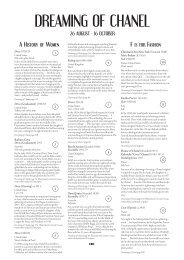
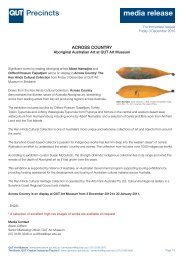

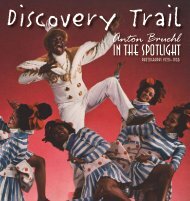
![Senior Years (10-12) [pdf - 4.5 MB] - QUT Art Museum](https://img.yumpu.com/38225334/1/184x260/senior-years-10-12-pdf-45-mb-qut-art-museum.jpg?quality=85)
